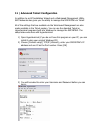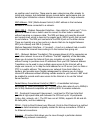
DHCP - Dynamic Host Configuration Protocol. This protocol automatically
configures the TCP/IP settings of every computer on your home network.
DNS
- DNS stands for Domain Name System, which allows Internet host
computers to have a domain name (such as www.smc.com) and one or more IP
addresses (such as 192.34.45.8). A DNS server keeps a database of host
computers and their respective domain names and IP addresses, so that when a
domain name is requested (as in typing " www.smc.com" into your Internet
browser), the user is sent to the proper IP address. The DNS server address
used by the computers on your home network is the location of the DNS server
your ISP has assigned.
DSL - DSL stands for Digital Subscriber Line. A DSL modem uses your existing
phone lines to transmit data at high speeds.
EAP
- (Extensible Authentication Protocol) This is a mode of conversation
between a Supplicant and an Authentication Server. Access Points or proxy
servers do not take part in the conversation. Their role is simply to forward EAP
messages between the parties performing the authentication. The EAP messages
are transported between a wireless station and an 802.1X Authenticator using
EAPOL. The EAP messages are sent between an 802.1X Authenticator and the
Authentication Server using RADIUS. The EAP framework supports the definition
of EAP-Type Authentication Methods. Today, the major EAP-Type Authentication
Methods include EAP-MD5, EAP-TLS, EAP-TTLS, EAP-PEAP, and Cisco’s EAP-
LEAP.
EAP-MD5 - This is the most basic EAP-Type, which must be supported by all
implementations of EAP. It is not a strong authentication method and does not
support dynamic WEP keys.
EAP-LEAP
- (Lightweight Extensible Authentication Protocol) It is the type
primarily used on Cisco WLAN access points. LEAP provides security during
credential exchange, encrypts using dynamic WEP keys, and supports mutual
authentication.
EAP-TLS - (Transport Layer Security) This uses the TLS handshake as the basis
for authentication. TLS performs authentication by exchanging digital certificates.
The server sends a certificate to the client and only after validating the server's
certificate does the client present a client certificate.
EAP-TTLS
- (Tunneled TLS) This mode an advantage over EAP-TLS that it only
requires a certificate at the Authentication Server.


















